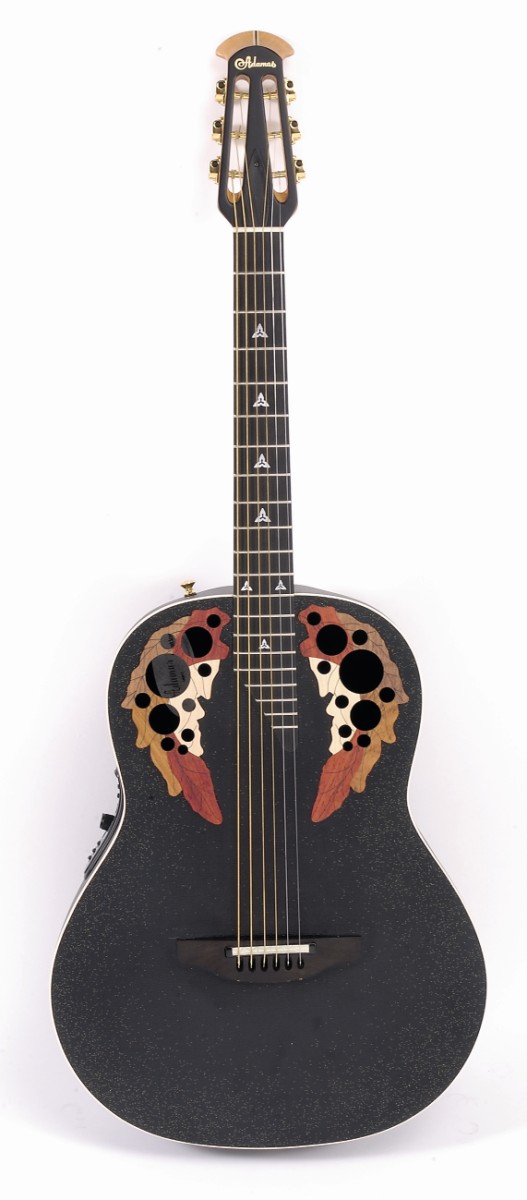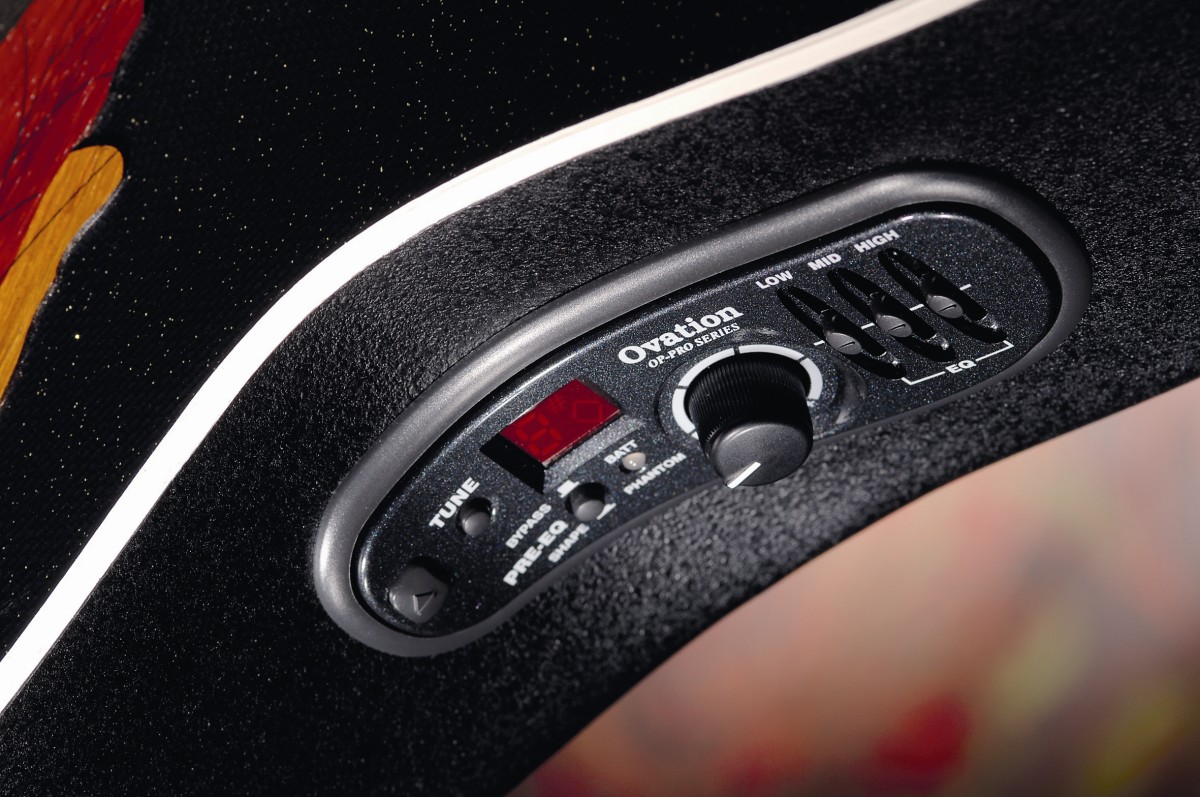MusicRadar Verdict
The Adamas isn't breaking new ground but it delivers an interesting and thoroughly enjoyable fusion of concepts. It's expensive, but then it's a unique, strictly limited commemorative edition.
Pros
- +
Consistent action and intonation at all neck positions. Nifty preamp.
Cons
- -
Slightly squidgy bottom end. A few minor imperfections.
MusicRadar's got your back

It's that old-school Adamas look!

The OP-Pro preamp features gain, three band EQ, onboard tuning and more.
This is essentially the Adamas version of Ovation's old-style Folklore model, but with a slightly slimmer neck.
The textured Fibronic top is old-school Adamas, but otherwise it's styled and spec'd more like the plainer, modern SMT/CVT models.
Within this guitar's standard issue deep bowl is some tidy, if a little glue-splodged, joinery. The light, vertical fan bracing, which is known as Quintad, is a vital factor in the Adamas soundboard's enhanced vibrational response.
The laminate top has two 0.13mm (0.005-inch) carbon fibre outer layers and a 0.89mm (0.035-inch) birch or poplar veneer sandwiched between.
The carbon fibres run lengthways, while the wood veneer grain is offset at 60 degrees to yield a very thin, rigid membrane that offers improved dynamic response compared to thicker, more heavily braced spruce tops.
Outside, its matt black finish is lightly speckled with gold, which does look a bit like you've been decorating too near to it.
Of all the Adamas soundhole designs, the five-piece epaulet is the simplest option, using maple, walnut, teak and padauk.
Love it or loathe it, this helps to strengthen the portholes. As usual, the white outer binding is left very sharp-cornered, and looks a bit cheap.
Joined via the standard double-bolt method, the laminate neck features the central ebony stratum, the ebony fingerboard and black headstock face of contemporary Adamas models.
Cleaner, and with less filler round the inlays, this model's fingerboard is tidier than that of its Ovation cousin.
While the slotted headstock may increase the string break angle over the nut, its slimline design forces the middle two strings to rest on the central section, which isn't ideal for tuning stability.
Understandably, these side-mount tuners are a bit stiffer than the other guitar's set. All other details match the Collectors' model though.
To play, this similarly profiled neck is wider but not deeper than the other model's, so it's a bit roomier for your fingertips, without feeling any more cumbersome.
It all feels very slick, too, in that dry satin kind of way. Not that it really matters on a 12-fretter, especially considering this model's slightly higher action, but you can spot some typical 'rolling off' of the fingerboard beyond the body joint if you're looking down from the nut. It's a common issue that the previous LX model's neck is designed to eradicate.
Equally spot-on 12th fret intonation, however, may still tempt some to stretch into that region. Typically, this standard deep bowl tends to move around when you're stood up playing, clearly proving what a welcome tweak the Deep Contour bowl is. Again, the sharp-cornered body binding is uncomfortable.
Sounds
With the 12-fret neck's ideal bridge placement and all of the Adamas' other intrinsic tweaks, there's a considerable boost in volume and general beefing up of the whole sound compared to the Collectors' model.
There's incredible bass resonance from the 12-fret, particularly around the bottom E and F, where it's almost overwhelming. The mid-range is also a potent driving force, but remains even-contoured and clear voiced. At the top end, there's a hard, spicy edge.
While this provides the piercing attack for every note you pluck, top-string high notes also exhibit thick, sweet-sounding undertones that add sustain and musical energy as far up as you can play.
You can literally play anywhere on this instrument with equally good results, and it's so responsive that you get plenty of output without having to really dig in. Play harder and the exceptional dynamics track every calorie of your input energy.
To a wood guitar purist, this tone will smack of too much physics and not enough loving lutherie, and while it's true that you always get a sense of the bowl's internal reverberation, it does its job very efficiently.
It makes for a very broad-toned, sensitive and crisply articulate, if slightly hard-sounding, fingerpicker, as well as a monstrously roaring strum machine.
However, it's playing plectrum-picked arpeggios and lead that will bring a smile to your face. Via the pickup's more generic sound, you do hear the extra bass, but the significant differences between this and the other model's acoustic tone don't come across so clearly.
“Built from the same sacred stash of NOS silicon transistors and germanium diodes, giving it the soul – and snarl – of the original”: An octave-fuzz cult classic returns as Jam Pedals resurrects the Octaurus
What’s the buzz? Meet Yellowjacket, Cherry Audio's recreation of EDP’s trend-setting Wasp from 1978
“A fabulous trip through all eight songs by 24 wonderful artists and remixers... way beyond anything I could have hoped for”: Robert Smith announces new Cure remix album









